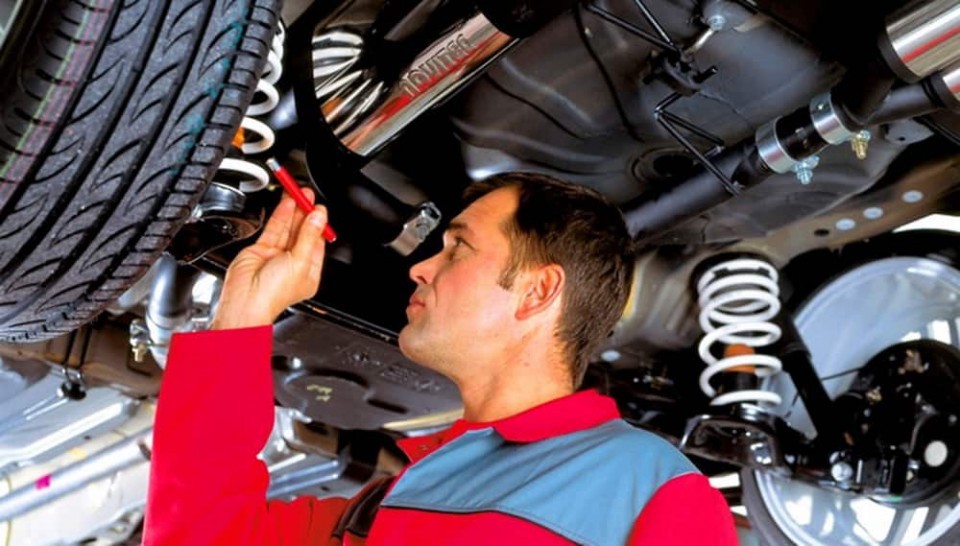
How to replace shock absorbers
Content
Your dampers or dampers are a key part of your car's suspension. As their name suggests, their purpose is not to absorb shock. They do so much more and are invaluable to your car as they help you drive…
Your dampers or dampers are a key part of your car's suspension. As their name suggests, their purpose is not to absorb shock. They do so much more and are invaluable to your vehicle by improving ride quality, suspension wear and tire life.
Not knowing when to replace shock absorbers or what to look for when they fail can prevent you from replacing them when needed. Knowing the typical signs of failure and a little bit about how shocks are installed on your car can help you diagnose and repair shocks, or at least can make you an informed consumer that you won't be taken advantage of when you need to replace shocks.
Part 1 of 3: Purpose of your shock absorbers
Shock absorbers, like struts, are designed to control the vibration or elasticity of the springs. As you ride over bumps and dips in the road, the suspension moves up and down. Your car's springs absorb suspension movement. If your car didn't have shock absorbers, the springs would start bouncing—and keep bouncing uncontrollably. The design of the shock absorber is to provide a certain resistance to this movement, to control it and not to allow it to bounce more than twice.
The design of the shock absorber allows you to control the movement of the spring. Shock absorbers have a piston that moves through a cylinder. The cylinder is filled with liquid and compressed gas. The piston has a small metering orifice, making it difficult for the piston to move in and out of pressurized fluid. It is this resistance that slows down the movement of the springs.
All shock absorbers differ slightly from each other depending on the needs and size of the car. The differences are usually related to the amount of pressure in the cylinder and the type and size of the holes in the piston. This affects how quickly the shock can stretch and contract. When a shock fails or starts to fail, it may become too soft (thus not allowing it to control the movement of the springs) or it may begin to compress internally (preventing the suspension from moving properly).
Part 2 of 3: Typical Failure Signs and How to Recognize Them
Shock absorbers can fail for a number of reasons: they can fail due to driving style, they can fail due to age. They can also fail for no reason. There are a few simple steps you can follow to identify a failed shock absorber.
- failure test. When the vehicle is on a level surface, press up and down on the front or rear of the vehicle until it starts to bounce. Stop rocking the vehicle and count how many times it keeps bouncing until it stops.
A good shock should stop the bouncing after two up and down motions. If the car bounces too much or cannot move at all, then the bumps may be bad.
- Test Drive. If the shock absorbers are worn out, the suspension can be very soft and unstable. Your vehicle may rock back and forth while driving. If there is a shock absorber that binds, then your car will ride very hard.
Visual inspection. When the car is in the air, you need to inspect the shock absorbers. If the shock absorbers leak fluid or are dented, they must be replaced. Also check the tires. Worn shock absorbers cause cupped tire wear, which shows up as high and low points.
Manual testing. Remove the shock absorber from the car and try to compress it by hand. If he moves easily, then the hit may be bad. A good shock absorber should have good compression resistance, and most shock absorbers will stretch on their own when you let them go.
There is no set maintenance schedule for replacing shock absorbers, but most shock manufacturers recommend replacing them every 60,000 miles.
Part 3 of 3: Shock Replacing
Necessary materials
- Hydraulic floor jack
- Jack stands
- Ratchet with different heads
- Shock absorbers (must be replaced in pairs)
- Wrench
- Wheel chocks
- Keys (various sizes)
Step 1. Park the vehicle on a level, firm and level surface with the parking brake applied..
Step 2: Install wheel chocks around the wheels that will remain on the ground.. You will be lifting the end of the car that needs to be replaced with shock absorbers, leaving the other end on the ground.
Step 3: Raise the car. Working from one side, raise the vehicle by setting the floor jack to the factory jacking point.
You want to raise the car high enough so that you can comfortably get under it.
Step 4: Place the jack under the factory jacking point.. Lower the car onto a stand.
You should now have a place to work under your vehicle.
Step 5: Depressurize the Suspension. Place a jack under the section of suspension you are working on first and raise it just enough to take some of the pressure off the suspension.
- A warning: It is important that the vehicle does not come off the jack when jacking up the suspension. You only do this on the side you are working on - if you change the right front shock first, you will only place the jack under the right front arm.
Step 6: Remove the shock mounting bolts using a suitable socket or wrench..
Step 7: Remove shock absorber from vehicle and dispose of.
Step 8: Install New Shock and Mounting Bolts.
- Functions: Some new shock absorbers will not fit the mounting bracket. If it doesn't fit, you may need to bend the bracket a little.
Step 9: Tighten mounting bolts to manufacturer's specifications.. You should be able to find the specifications in the user manual.
If you don't have torque specifications, tighten the bolts all the way.
Step 10: Remove the jack from under the suspension.
Step 11: Lower the car to the ground.. Place the jack under the factory jacking points and lift the vehicle off the jack.
Remove the jack and lower the car to the ground.
Step 12: Remove the wheel chocks.
Step 13: Test drive the car. Listen for any sounds, such as squeaks or pops, that may indicate that something has been tightened incorrectly.
If there is no noise, then you should notice that the car drives much better than before.
If you are uncomfortable replacing shock absorbers yourself, you should seek help from a certified mechanic. A certified AvtoTachki field mechanic will be happy to come to your home or office to replace shock absorbers.

